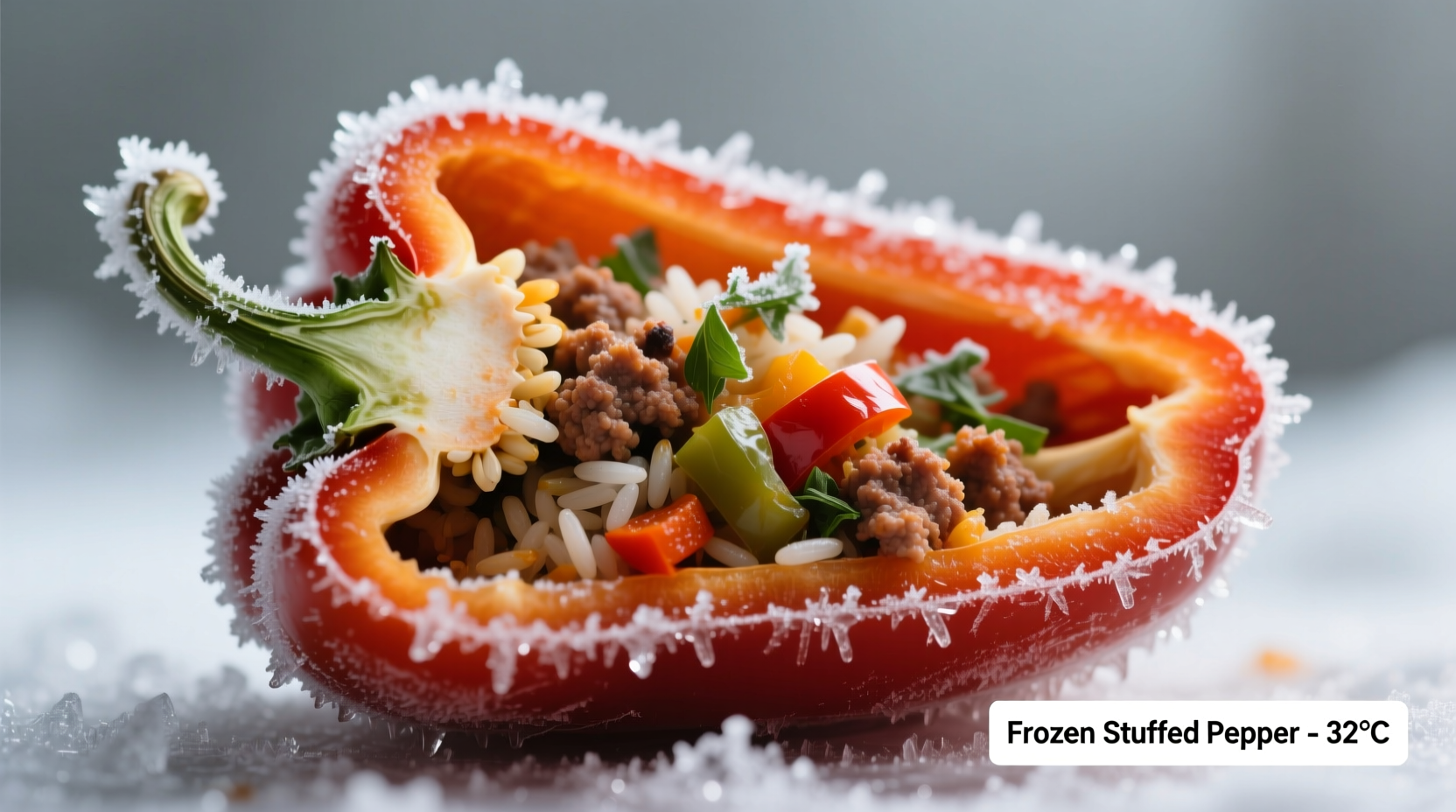Freezing stuffed peppers is a smart meal prep strategy that saves time without sacrificing quality. Whether you've cooked a large batch or want to preserve leftovers, understanding the proper freezing methods ensures your stuffed peppers maintain their delicious flavor and texture when reheated. In this comprehensive guide, you'll learn the step-by-step process that professional chefs and food scientists recommend for optimal results.
The Science Behind Freezing Stuffed Peppers
When freezing stuffed peppers, the key challenge is maintaining texture integrity. Peppers contain high water content that forms ice crystals during freezing, potentially making them mushy when thawed. According to research from the USDA Food Safety and Inspection Service, proper flash-freezing techniques minimize ice crystal formation, preserving cellular structure.
| Freezing Method | Texture Preservation | Recommended For |
|---|---|---|
| Flash-freezing before storage | Excellent | All stuffed pepper varieties |
| Direct freezing in container | Fair to poor | Not recommended |
| Vacuum sealing | Very good | Long-term storage (2+ months) |
Step-by-Step Freezing Process
Preparation Stage
Before freezing, ensure your stuffed peppers have cooled completely to room temperature. Rushing this step traps steam inside, creating excess moisture that damages texture during freezing. The National Center for Home Food Preservation recommends cooling cooked foods within 2 hours to maintain food safety.
Flash-Freezing Technique
1. Arrange cooled stuffed peppers on a parchment-lined baking sheet, ensuring they don't touch 2. Freeze uncovered for 1-2 hours until solid 3. This critical step prevents peppers from sticking together and minimizes moisture transfer

Long-Term Storage
After flash-freezing: - Transfer peppers to airtight freezer containers or heavy-duty freezer bags - Remove as much air as possible to prevent freezer burn - Label with contents and date - For best quality, consume within 3 months (though safe indefinitely at 0°F)
Reheating Methods That Restore Quality
How you thaw and reheat frozen stuffed peppers significantly impacts final quality:
Recommended Thawing Process
1. Transfer from freezer to refrigerator 24 hours before reheating 2. Never thaw at room temperature (food safety risk) 3. For quicker preparation, cook directly from frozen with added cooking time
Optimal Reheating Techniques
Oven method (best for texture): 350°F for 25-35 minutes covered, then 10 minutes uncovered Skillet method (best for crispiness): Medium heat with lid for 15 minutes, then uncovered for 5 minutes Air fryer (best for speed): 320°F for 12-15 minutes
Common Freezing Mistakes to Avoid
Based on culinary testing at America's Test Kitchen, these errors compromise frozen stuffed pepper quality:
- Skipping the flash-freezing step (causes sticking and texture damage)
- Using regular sandwich bags instead of freezer-safe containers
- Freezing stuffed peppers with watery fillings like fresh tomatoes
- Reheating without covering (dries out the peppers)
When Freezing Isn't Recommended
While most stuffed peppers freeze well, certain variations don't hold up:
- Peppers stuffed with dairy-based fillings (ricotta, cream cheese) may separate
- Recipes containing raw eggs in the filling develop rubbery texture
- Peppers with delicate vegetables like zucchini that become mushy
For these varieties, consider freezing the filling separately from the peppers.
Freezer Storage Timeline
Understanding quality degradation helps maximize enjoyment:
- 0-1 month: Near-fresh quality, minimal texture changes
- 1-2 months: Slight texture softening, still excellent flavor
- 2-3 months: Noticeable texture changes but still acceptable
- 3+ months: Significant quality loss, increased freezer burn risk
Practical Freezing Tips from Professional Kitchens
Professional chefs at the Culinary Institute of America recommend these advanced techniques:
- Undercook peppers slightly before freezing (they'll finish cooking during reheating)
- Add acidic ingredients like lemon juice to filling to preserve color
- Place parchment between layers when stacking in containers
- Freeze fillings separately for customized assembly after thawing











 浙公网安备
33010002000092号
浙公网安备
33010002000092号 浙B2-20120091-4
浙B2-20120091-4